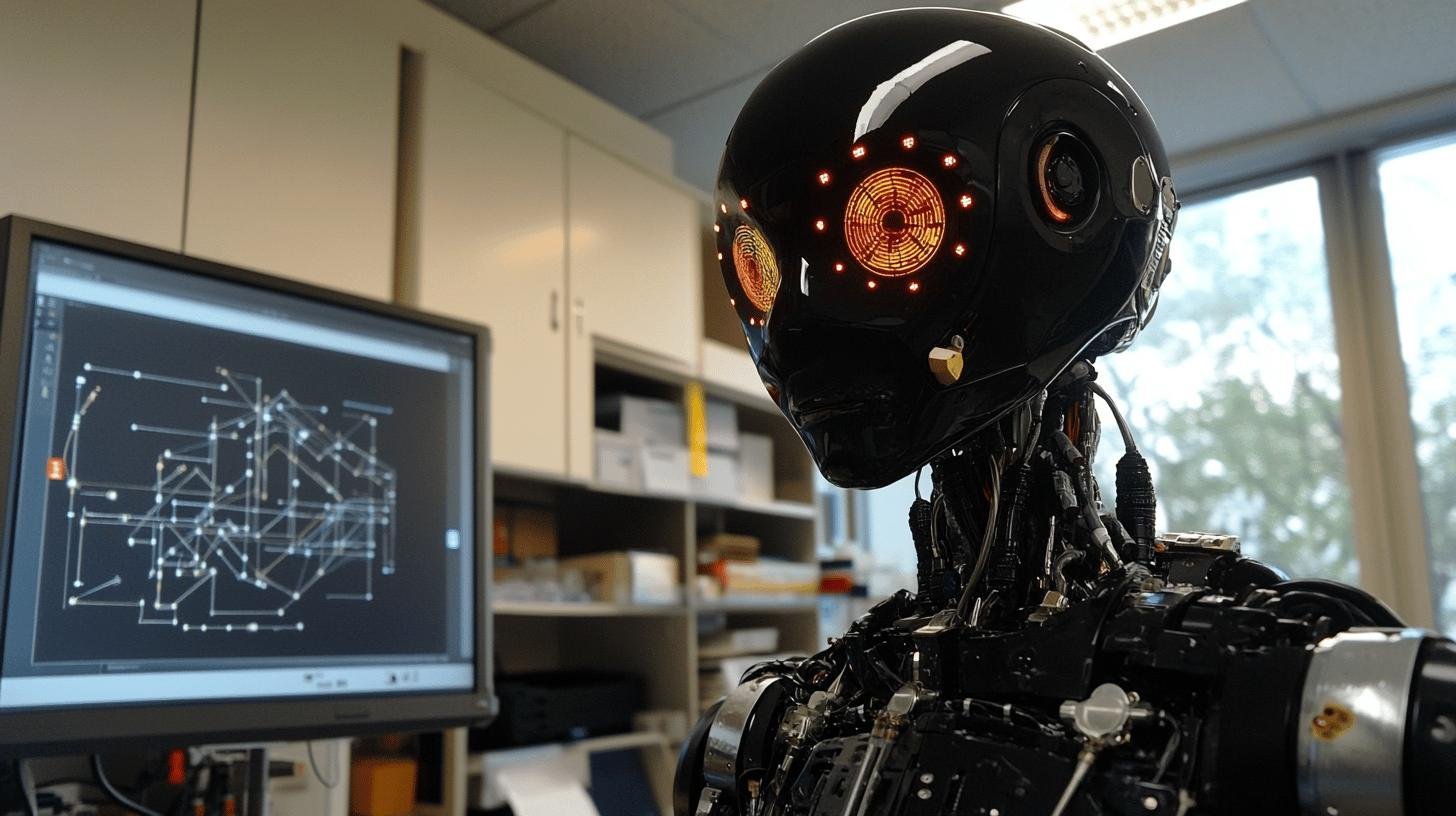Imagine a future where AI systems not only match human intelligence but exceed it, fundamentally altering the way we live and work. This isn’t science fiction—OpenAI has meticulously crafted a five-level framework to classify AI models as they advance toward surpassing human capabilities. From chatbots that carry simple conversations to autonomous organizers that could redefine entire industries, each level reveals a stepping stone in AI’s evolutionary journey. Understanding these levels not only illuminates the trajectory of AI advancements but also prepares us for the profound impacts these innovations will have on our society.
Understanding OpenAI’s Five Levels of AI Models
OpenAI has crafted a five-level classification system to meticulously track and understand the advancement of artificial intelligence systems as they progress towards surpassing human capabilities. This framework is significant because it offers a structured, transparent approach to gauging AI’s development across various stages, providing clarity to researchers, developers, and policymakers. By categorizing AI models based on their capabilities, OpenAI aims to delineate the journey towards Artificial General Intelligence (AGI), a state where AI can perform any intellectual task as well as or better than humans.
The implications of this framework are profound for AI research and applications. It provides a roadmap for researchers to identify the current capabilities of AI systems and the necessary advancements required to reach higher levels. By understanding these levels, organizations can better align their AI development strategies, focusing on pushing the boundaries of what these systems can achieve. Each level represents a step up in complexity and capability, creating a benchmark for innovation and ensuring that AI technology is developed with clear objectives.
In tracking AI advancement towards AGI, this classification framework serves as a vital tool for monitoring progress and setting realistic milestones. It helps stakeholders assess which level an AI system currently operates at and what further advancements are needed to reach subsequent stages. This not only fosters a deeper understanding of AI’s growth trajectory but also aids in anticipating the potential societal and economic impacts as AI systems become increasingly sophisticated. By doing so, OpenAI facilitates a more informed dialogue on the future of AI and its integration into various facets of life.
Level 1: Chatbots and Conversational AI

Level one in OpenAI‘s AI model classification is characterized by “Chatbots,” which are designed for engaging in human-like conversations. These models, such as GPT-3.5, are capable of processing natural language to hold coherent dialogues with users. While they excel in generating contextually relevant and grammatically correct responses, their capabilities are limited to specific tasks. This restriction is due to their design, which focuses on understanding and responding to user inputs rather than executing complex problem-solving functions.
Conversational AI finds its applications in several domains, providing valuable services by automating interactions and offering real-time assistance. However, its limitations include a lack of deep understanding and reasoning, which can lead to challenges in handling ambiguous or multifaceted queries. Despite these constraints, conversational AI continues to evolve, with ongoing advancements aimed at enhancing its contextual comprehension and response accuracy.
- Virtual assistants
- Customer service bots
- Language translation tools
- Educational tutoring systems
Level 2: Reasoners
Level 2, identified as “Reasoners,” represents a significant advancement in AI capabilities. These models are designed to solve complex problems across various domains without requiring detailed instructions. What sets Reasoners apart is their ability to understand context and make inferences, allowing them to tackle tasks that demand higher cognitive functions. This capability positions them as potential game-changers in fields like data analysis, decision support, and autonomous operations, where nuanced understanding and adaptability are crucial.
The potential impact of achieving Level 2 is profound across multiple industries. In healthcare, for example, Reasoners could analyze patient data to provide diagnostic support or treatment recommendations, enhancing the accuracy and efficiency of medical care. In finance, these models could assess market trends and predict economic shifts with greater precision, offering valuable insights for investment strategies. Their ability to process and analyze large datasets quickly could also revolutionize research and development sectors by accelerating discoveries and innovations.
| AI Level | Capabilities |
| Level 1 | Conversational tasks, limited to specific contexts |
| Level 2 | Problem-solving across domains, understanding context without detailed instructions |
Level 3: Agents

Level 3, known as “Agents,” marks a pivotal point in the evolution of complex AI systems. These models are characterized by their ability to perform tasks independently or with minimal human guidance. The primary defining feature of Agentic AI is its capacity to adapt to changing situations, acting as extensions of human intent. This adaptability is enabled through advanced machine learning models and neural networks that allow the AI to learn from its environment and optimize its actions over time. By achieving a level of autonomy, Agents can manage tasks that require continuous decision-making and context awareness, setting them apart from simpler AI systems.
Developing Agentic AI presents significant challenges and requires meeting specific conditions to ensure their effective functionality. One of the main hurdles is designing models that can reliably interpret and react to dynamic environments. This involves creating sophisticated algorithms capable of processing vast amounts of data in real-time and making informed decisions based on incomplete or ambiguous information. Additionally, ensuring safety and ethical alignment in these autonomous systems is paramount, necessitating robust frameworks to prevent undesirable outcomes. The development of these models also demands substantial computational resources and expertise in both AI programming and domain-specific knowledge to tailor the AI’s capabilities to particular applications.
Applications of Agentic AI
Agentic AI is being implemented or explored across various industries, where its autonomous capabilities can provide significant benefits. In the automotive sector, for instance, self-driving vehicles utilize Agentic AI to navigate complex traffic conditions, making real-time decisions that enhance safety and efficiency. In finance, these systems are employed for automated trading, where they can analyze market trends and execute trades with minimal human intervention. Healthcare is another domain where Agentic AI shows potential, assisting in patient monitoring and personalized treatment plans by analyzing data and adjusting care protocols as needed. Manufacturing processes also benefit from these AI systems, which optimize production lines and manage supply chains with improved precision.
Current Developments
Numerous startups and projects are working on advancing Agentic AI, contributing to its evolution and adoption. Notable examples include companies like Waymo, which is at the forefront of developing autonomous vehicle technology. Another significant player is Blue River Technology, which focuses on agricultural applications, using AI to perform tasks such as crop monitoring and pest control with minimal human oversight. In the realm of robotics, Boston Dynamics is pioneering the use of Agentic AI in creating robots that can adapt to various physical tasks, from warehouse management to search and rescue operations. These initiatives highlight the ongoing efforts to refine and expand the capabilities of Agentic AI, paving the way for broader integration across different sectors.
Level 4: Innovators
Level 4, referred to as “Innovators,” represents a significant leap in AI functionality tiers, where artificial intelligence systems contribute actively to creative processes and scientific breakthroughs. How can Innovators revolutionize fields such as science and technology? By harnessing advanced deep learning techniques, these AI models possess the ability to generate novel concepts and ideas that can push the boundaries of current knowledge. They are capable of analyzing vast datasets to identify patterns and correlations that might elude human researchers, thus accelerating the pace of discovery and invention in fields ranging from pharmaceuticals to renewable energy.
What are the implications of AI-generated innovations on society and industry? The advent of Innovators could lead to transformative changes, reshaping industries and societal structures by introducing unprecedented efficiencies and capabilities. In industry, AI-driven innovations can optimize production processes, enhance product design, and lead to the development of entirely new markets. Societally, these advancements hold the promise of addressing complex challenges, such as climate change and healthcare accessibility, by providing actionable insights and solutions. However, the integration of such powerful AI systems also raises ethical and economic considerations, necessitating frameworks to ensure that their use aligns with human values and benefits the broader community.
- Designing novel pharmaceuticals for complex diseases
- Creating efficient renewable energy solutions
- Developing advanced materials with unique properties
- Enabling personalized medicine through tailored treatment plans
- Revolutionizing urban planning with smart infrastructure solutions
Level 5: Organizations and the Path to AGI

Achieving Level 5, referred to as “Organizations,” signifies the apex of AI technology levels, where artificial intelligence has reached the state of Artificial General Intelligence (AGI). What does achieving Level 5 entail? It involves AI systems capable of managing entire organizations autonomously, integrating skills and knowledge from previous levels to perform tasks with human-like expertise across diverse fields. This level represents the culmination of AI development, as it embodies the ultimate goal of creating systems that not only replicate but also enhance human cognitive abilities in a wide array of economically valuable activities. OpenAI envisions future models possessing intelligence equivalent to or exceeding that of a PhD holder, marking a transformative shift in how AI interacts with the world.
The path to AGI is fraught with challenges and ethical considerations. What are the main ethical concerns associated with AGI? The primary challenges include ensuring AI systems align with human values, maintaining transparency in decision-making processes, and preventing misuse of advanced AI capabilities. Additionally, there is the issue of job displacement, as AGI could potentially perform tasks currently handled by humans, leading to economic and social disruptions. Developing robust regulatory frameworks and ethical guidelines is crucial to mitigate these risks and ensure that AGI contributes positively to society. Addressing these challenges requires collaboration among researchers, policymakers, and industry leaders to foster a safe and beneficial transition to AGI.
| Level 1 | Conversational AI, limited to specific tasks. |
| Level 2 | Problem-solving across domains without detailed instructions. |
| Level 3 | Autonomous task performance, adapting to changing situations. |
| Level 4 | Contributing to creative processes and scientific breakthroughs. |
Level 5
| Managing entire organizations, representing AGI. |
The journey toward AGI is marked by significant OpenAI breakthroughs in model training processes and machine learning advancements. As AI technology evolves through the levels, each stage builds upon the previous, enhancing capabilities and expanding the potential applications of AI systems. OpenAI’s structured approach to defining these levels provides a clear framework for understanding the progression of AI development, setting realistic goals, and fostering innovation. While the realization of Level 5 remains a challenging frontier, the pursuit of AGI holds the promise of revolutionizing industries, addressing complex global challenges, and redefining the possibilities of human-technology collaboration.
Final Words
Exploring OpenAI‘s five levels of AI models offers invaluable insights into the evolution of artificial intelligence, revealing a clear trajectory from chatbots to autonomous organizations.
These levels provide a comprehensive framework to assess current AI model capabilities, their impact on diverse industries, and the eventual progression toward artificial general intelligence (AGI).
As OpenAI continues advancing through these levels, the potential benefits for innovation and efficiency are immense.
The journey across these AI levels underscores the transformative potential of OpenAI’s five levels of AI models, laying the groundwork for a future beyond human capabilities.
FAQ
What are the 5 levels of AI agents?
The five levels of AI agents include:
- Chatbots that engage in human-like conversations.
- Reasoners capable of solving problems across various domains.
- Agents that perform tasks independently.
- Innovators contributing to creative processes and scientific breakthroughs.
- Organizations representing AGI.
What are the levels of AI in OpenAI?
The levels of AI in OpenAI are structured to demonstrate advancements from basic chatbot interactions to autonomous organizations, with each level representing increased complexity and capability.
What is the OpenAI 5-level roadmap?
The OpenAI 5-level roadmap outlines a structured progression of AI capabilities from conversational agents to AGI. Each level builds upon previous abilities, ultimately aiming for AI that can autonomously manage organizations.
What is level 5 AI?
Level 5 AI, known as “Organizations,” signifies reaching Artificial General Intelligence (AGI) where AI systems can autonomously manage entire organizations. This stage integrates skills from all prior levels and represents the pinnacle of AI development.